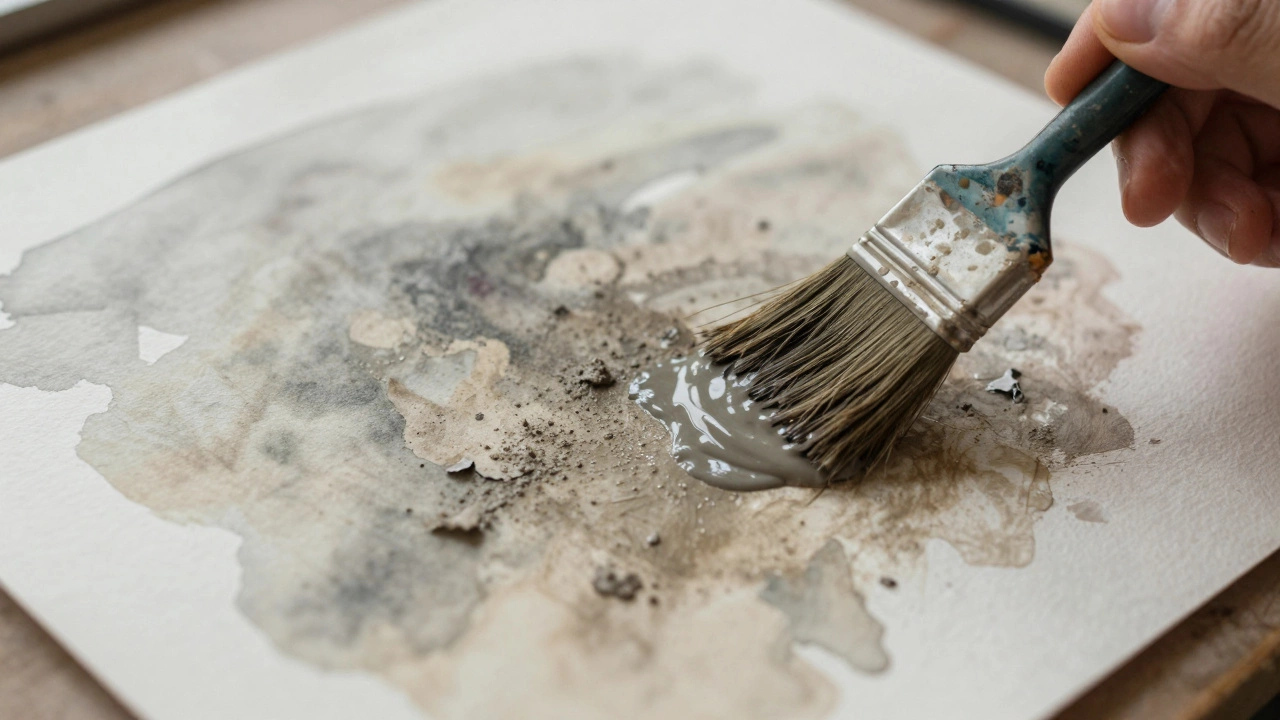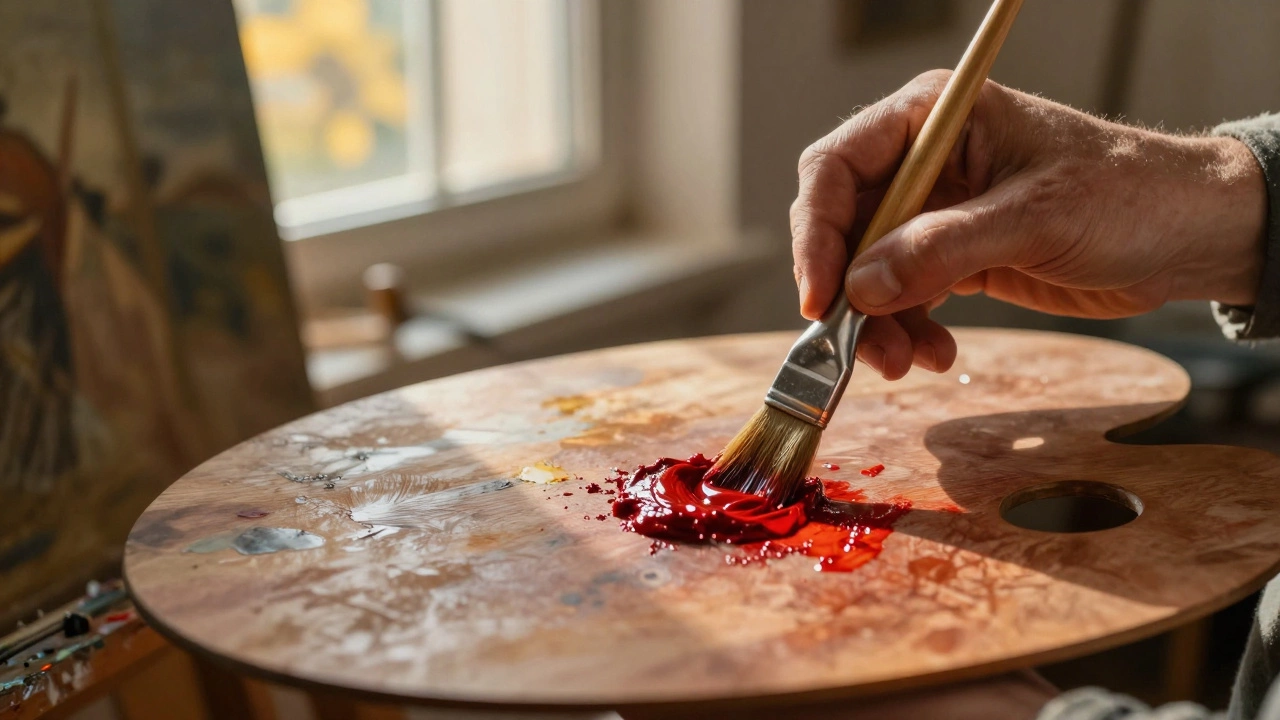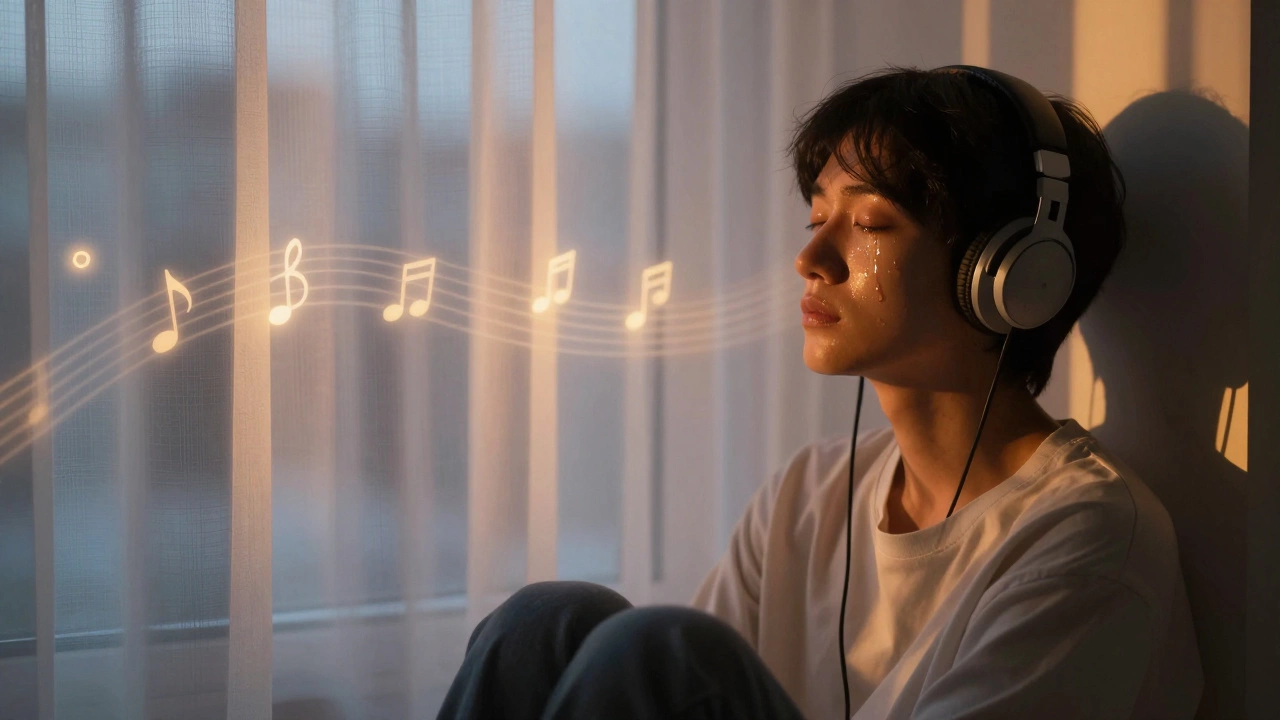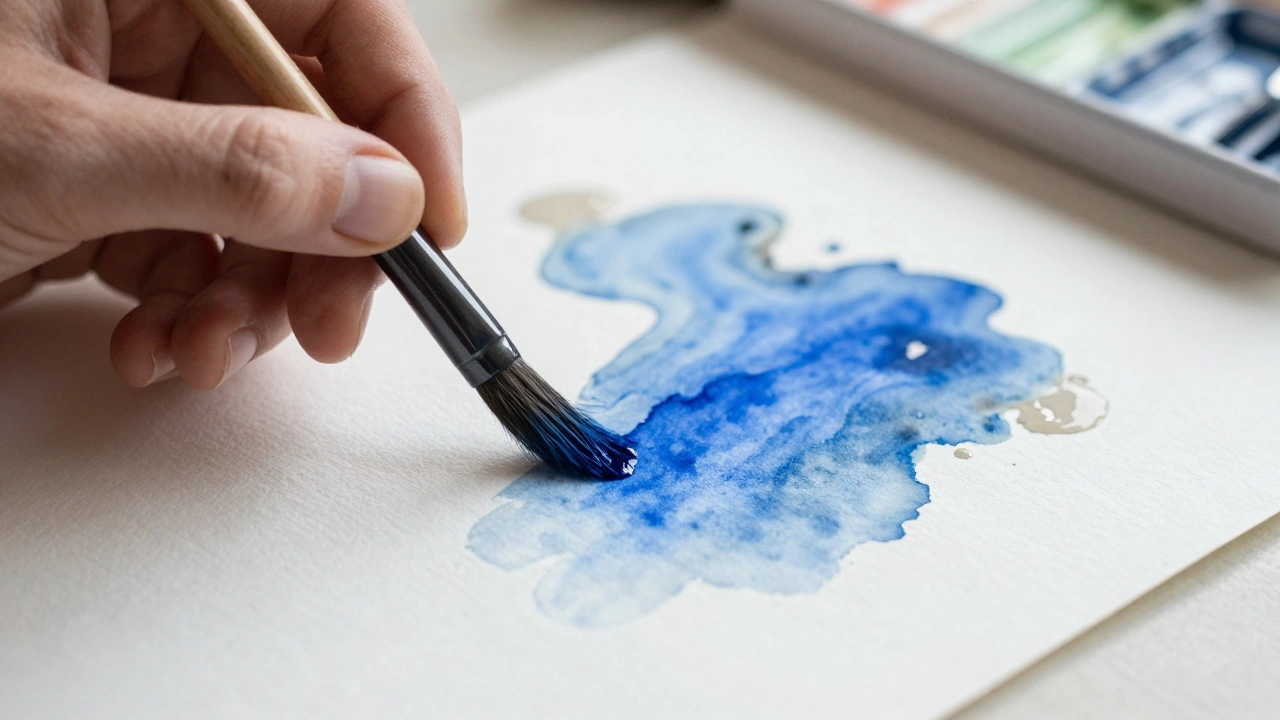Painting portraits might sound like something only famous artists do for wealthy clients, but there are real ways to earn money from it—even if you’re not Picasso. The internet has made it way easier to find people willing to pay for custom art. People love the idea of a hand-painted portrait for gifts, anniversaries, pets, or even just to jazz up their home—so there’s a steady demand if you know where to look.
Even so, turning your art into steady income isn’t as simple as opening a tiny online shop and waiting for commissions. Most artists start with word-of-mouth—friends, family, colleagues. Others set up portfolios on Instagram, TikTok, or specific art platforms to show off their best work. If you paint a cat that looks almost alive, pet lovers go wild. The secret to getting paid regularly is letting people know you exist, that your portraits have personality, and that you’re easy to work with.
- How Portrait Artists Actually Make Money
- Finding Clients and Building Trust
- Pricing Your Portraits—What Works (and What Doesn’t)
- Must-Know Tips If You’re Just Starting Out
How Portrait Artists Actually Make Money
There isn’t just one way to make cash with portrait painting, and honestly, most artists don’t stick to a single stream. Everyone thinks of private commissions first—where someone hires you to draw their grandma, their kid, or their favorite dog. These jobs usually come through word-of-mouth or social media, and prices can swing from $50 for a quick sketch to over $2,000 for a huge, detailed painting. It all depends on your experience, medium, and reputation.
Besides commissions, lots of artists set up online shops for prints. Some folks sell original portraits, but the real money comes from selling high-quality prints. This lets you turn one painting into income over and over. Sites like Etsy, Society6, and Redbubble handle the technical stuff and can connect you to buyers you’d never meet in real life.
Here’s something you might not know: teaching is a serious earner. Even if you’re not an art superstar, you can offer portrait painting classes online. Platforms like Skillshare and Udemy let you upload lessons, and you get paid each time someone enrolls. Don’t underestimate local workshops either—people love hands-on creativity.
Here are a few solid, practical ways artists make their living with portraits:
- Private commissions—paintings for individuals, couples, or families.
- Pet portraits—pet owners are passionate buyers.
- Selling prints and merchandise (cards, shirts, mugs).
- Offering online or in-person painting classes.
- Crowdsourced projects—think Kickstarters for portrait series.
- Working at events (live sketching at weddings, markets, or fairs).
Still not sure how much you could make? Here’s a quick look at some real-life numbers:
| Type of Portrait | Average Price (USD) | Typical Turnaround Time |
|---|---|---|
| Digital Sketch | $50 - $150 | 2-5 days |
| 16x20" Oil Painting | $300 - $1,500 | 3-5 weeks |
| Live Event Portrait (per person) | $30 - $80 | 10-30 minutes |
| Online Course (per student) | $15 - $70 | Self-paced |
Most working artists juggle a few of these at the same time. It’s rare to just paint in a studio and have clients lining up; you usually mix direct sales, online stores, gig work, and teaching. The good news is, you don’t need permission from a fancy gallery—just your wits, some painting supplies, and a way to show people what you can do.
Finding Clients and Building Trust
The first real challenge for any portrait artist is getting noticed by people willing to pay for original portrait painting. Most folks aren’t just going to search “someone to paint my grandma” and magically find you. It takes work, but you can get real results if you know where to put yourself out there.
Start with the basics—social media works wonders. Instagram is packed with artists who post progress videos, finished pieces, or even funny stories about painting pets or grumpy toddlers. TikTok is wild for showing time-lapse paintings or sharing the story behind a portrait. If you consistently share your work in a way that feels genuine, people will engage. A 2023 report by The Art Market found that 68% of young collectors discover artists on Instagram first.
Don’t overlook the power of local community. There’s always someone looking for a graduation, wedding, or family gift that’s more original than a Target gift card. Try these simple tactics to reach clients:
- Ask friends and family to share your artwork on their feeds.
- Showcase a mini portfolio at local coffee shops, libraries, or art fairs with business cards attached.
- Use Facebook groups in your city—tons of people look for custom gifts there.
- Offer a giveaway portrait now and then. People love free stuff and it gets your name out there fast.
Now, about trust. No client is going to send money to a stranger unless they feel safe. I still remember my first paying portrait—a dog, of course—when I sent the client progress snapshots and shared details on how the process worked. Simple, regular updates make clients more relaxed and less likely to disappear or ghost you.
Keep in mind, building trust also means protecting your own time. Use simple contracts or written agreements even for small jobs. If you’re working through online commission sites like Etsy or Fiverr, those platforms handle payments and often help settle issues if things go sideways.
"Clients want two things: to feel heard, and to know their money is safe. Communication is the first art form every creative should master." — Art Business Coach Maria Brophy
Check out this quick look at where most portrait commissions actually come from, based on a 2024 artist survey:
| Source | % of Commissions |
|---|---|
| Social Media (Instagram, Facebook, etc.) | 40% |
| Friends/Referrals | 25% |
| Online Marketplaces (Etsy, Fiverr, etc.) | 18% |
| Local Events and Art Fairs | 12% |
| Other | 5% |
Clients want to see you’re real and reachable. Post work-in-progress shots, finished portraits (with permission), and happy client testimonials. This builds your reputation faster than a polished resume ever will.
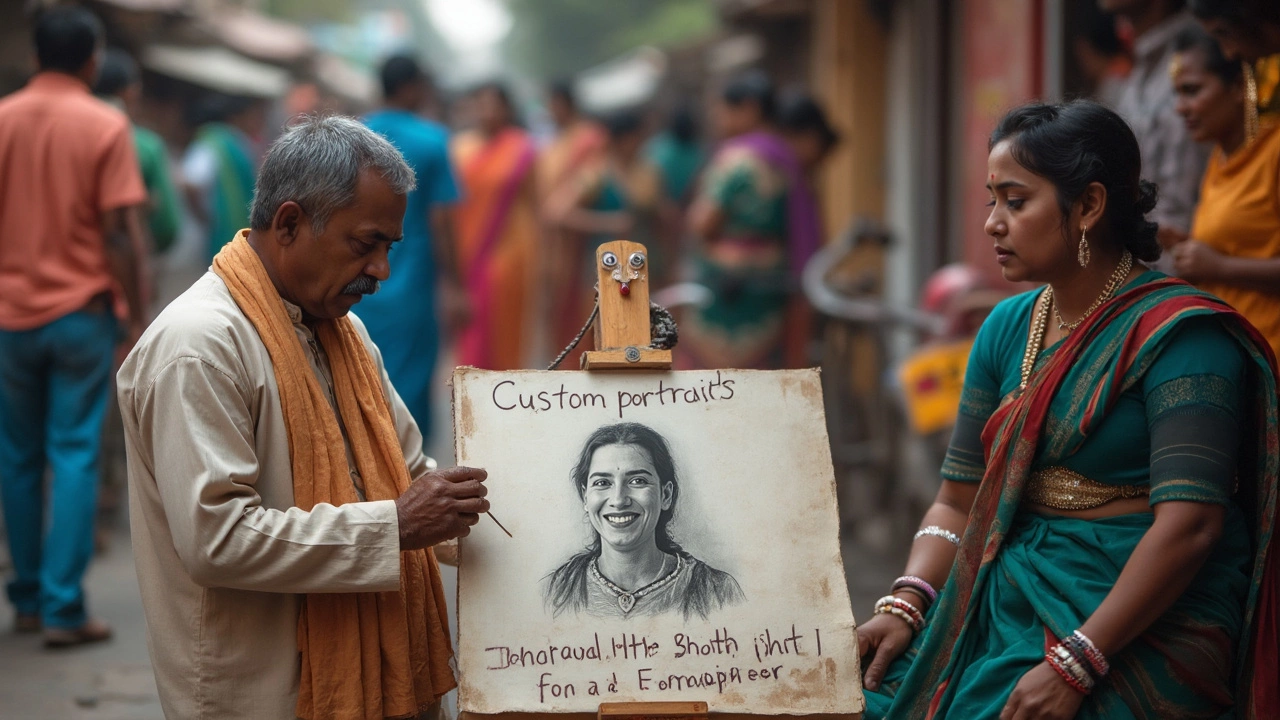
Pricing Your Portraits—What Works (and What Doesn’t)
This is where most folks trip up. Price too high, and new clients scroll on by. Price too low, and you’ll burn out (plus, people might doubt your skill). There’s no one-size-fits-all solution, but some tricks work better than others for portrait painting.
First, consider your skill level, the time needed, and the size of the piece. Even beginners should pay themselves more than minimum wage for their hours. If you’re painting a realistic face at 16x20 inches, expect around 10–25 hours of work. Ask yourself what feels worth it.
To help you out, here's a quick table with common pricing ranges for custom portraits in the US (as of early 2025):
| Size | Beginner/Emerging Artist | Experienced Artist | Top Tier/Well-Known |
|---|---|---|---|
| 8x10 inches | $75–$200 | $250–$600 | $1,000+ |
| 16x20 inches | $200–$500 | $600–$1,500 | $3,000+ |
| 24x36 inches | $500–$900 | $1,600–$3,500 | $6,000+ |
Another method is to charge per subject—meaning one person costs X, but add $40–$200 for every extra face or pet. Lots of artists also charge more for backgrounds or specific requests (like including a beloved old car or a crazy color scheme).
- Always get a deposit up front—most artists take 30–50% to start. This prevents headaches if someone decides to ghost you halfway.
- Be up front about revisions. I offer one round for free, but after that, I charge a small fee per fix.
- Factor in your supplies and shipping, especially if you use high-quality paper, canvas, or expensive paints.
What doesn’t work? Copying someone else’s prices blindly, or guessing what clients “might” pay. Undercutting the market hurts everyone, including you—customers will start treating all portrait artists like cheap labor. The sweet spot: your portrait should feel like a luxury, not a bargain bin deal, but still fair for the energy and talent you put in.
Here’s a tip that made a difference for me: keep raising your prices little by little, especially as your calendar fills up or your skill improves. Nobody tells you when you’re undercharging. You have to trust yourself and make the leap. Your time is valuable!
Must-Know Tips If You’re Just Starting Out
Kicking off your portrait painting career seems scary at first, but you can set yourself up for a smoother ride with these simple steps. Even pros started by tackling the basics—so you’re not behind, you’re just getting started.
- Learn from feedback, not just friends: Friends and family mean well, but real growth comes from feedback by people who have zero personal connection. Send your work to online art groups, Reddit forums, or Instagram communities. Sometimes the advice stings, but it’s what helps you level up.
- Invest in quality photos: Many artists lose clients because their sample photos are blurry or have bad lighting. Good lighting and clear shots can be the difference between getting ignored and getting commissioned. This applies to both your art and any reference photos clients send.
- Price for your level, then adjust: It’s tempting to work for free to build a portfolio, but charge something—even if it’s just covering materials. You’ll start to learn the business side faster if you set boundaries. Later, when demand grows, raise your prices.
- Get your setup right before saying yes: Have your supplies, social pages, and email templates ready. If you’re scrambling with basic stuff after you get an order, it shows. Pros look organized, even if they aren’t famous (yet).
The tough moments are normal. Even established artists like Lisa Clague admit to early struggles in the field, saying,
"Nobody learns this overnight. Half the job is finding your confidence; the other half is making sure people can see your work."
Get comfortable with self-promotion. Use stories, reels, or quick videos to share the process. People love seeing behind the scenes, and it often leads to more commissions than just posting finished pieces. And if a client is tricky or wants constant changes—don’t be afraid to politely set limits. You’ll thank yourself later.

